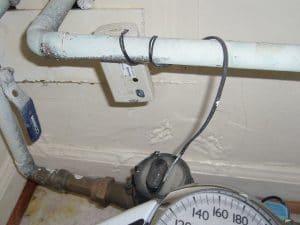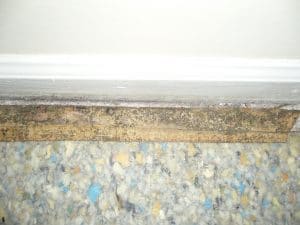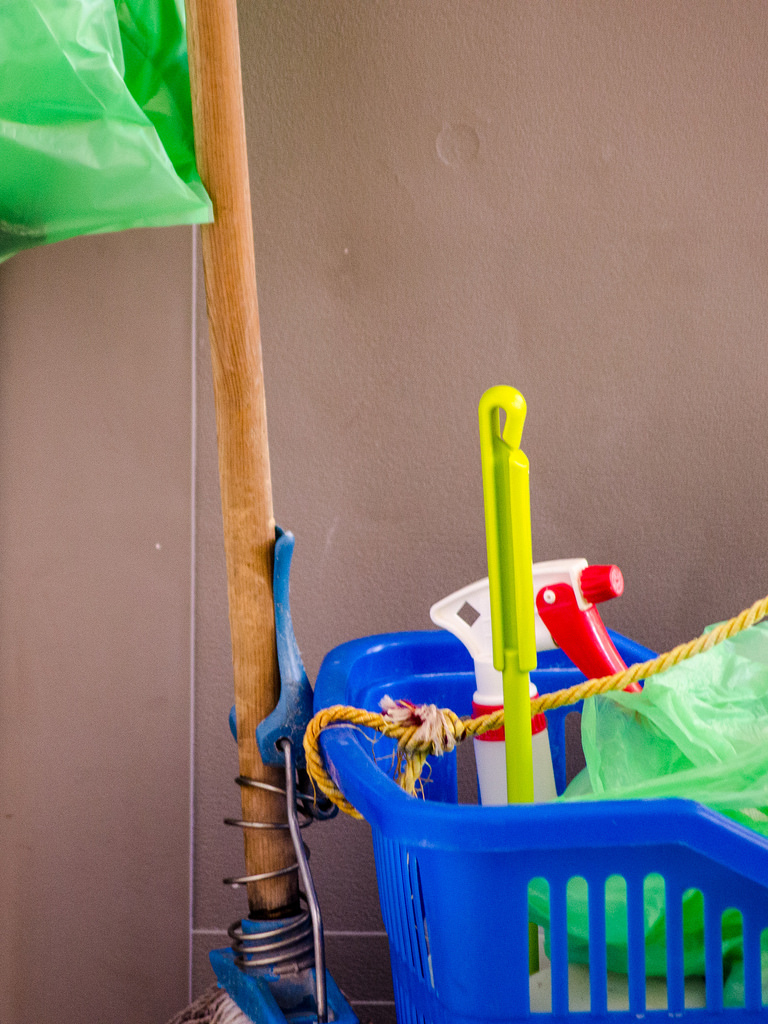How to Respond to a Water Leak Within Your Walls
When water leaks behind walls, it can be very difficult to detect. Homeowners who see the water bill skyrocket for no apparent reason are wise to look for hidden leaks within the property.
 Hidden water leaks are surreptitious, leaving homeowners dumbfounded when the water bill arrives. Leaks in the pipes can cause the water bill to either dramatically spike or creep up from month to month. Water bills typically show month-to-month comparisons for reviewing purposes.
Hidden water leaks are surreptitious, leaving homeowners dumbfounded when the water bill arrives. Leaks in the pipes can cause the water bill to either dramatically spike or creep up from month to month. Water bills typically show month-to-month comparisons for reviewing purposes.
Legitimate reasons for a higher than normal water bill include watering the lawn in the summertime or letting the kids play in the sprinkler. An unexplained jump in the water bill, however, should prompt a homeowner to start looking for hidden plumbing leaks.
Leaks behind walls are silent, making them difficult to spot. When a leak is found, it is important to respond quickly and mitigateTo mitigate is to reduce or limit the severity of damage, ri... More the damage. But first, you need to find the leak.
Step 1: Look for Signs of Water Leaks
Musty Odor
A water leak can be identified by its musty odorAn odor is a smell, often detectable by the human nose, whic... More. Water accumulating behind a wall has little chance to evaporate. Consequently, the stagnating water in the leaky pipes develops a musty smell. When water sits in one place, the whole room starts to give off a noxious odorAn odor is a smell, often detectable by the human nose, whic... More.
Mold Growth
 Leaking pipes cause moldMold is a type of fungus that grows in damp or humid conditi... More and mildewMildew is a type of fungus that grows on damp surfaces, typi... More. SporesSpores are microscopic reproductive units of fungi or mold t... More thrive in the moist, damp environments behind walls. The moldMold is a type of fungus that grows in damp or humid conditi... More may infest other areas, too, like under the floor, behind floorboards, or inside the vent. When homeowners see moldMold is a type of fungus that grows in damp or humid conditi... More growth on the baseboards, floor or ceilings, a leaking pipe is the root of the problem.
Leaking pipes cause moldMold is a type of fungus that grows in damp or humid conditi... More and mildewMildew is a type of fungus that grows on damp surfaces, typi... More. SporesSpores are microscopic reproductive units of fungi or mold t... More thrive in the moist, damp environments behind walls. The moldMold is a type of fungus that grows in damp or humid conditi... More may infest other areas, too, like under the floor, behind floorboards, or inside the vent. When homeowners see moldMold is a type of fungus that grows in damp or humid conditi... More growth on the baseboards, floor or ceilings, a leaking pipe is the root of the problem.
Water Stains
Stains on the ceilings, walls, and floors are indicative of a leak. The stains may appear as dingy spots or as water mark outlines on the wall. If left untreated, the ceiling will start to sag and might even collapse. If along the floor, the floorboards might sink under pressure.
Peeling and Discoloration
Peeling paint or wallpaper reveal a moisture problem behind the walls. Since most house paints are water-based, they degenerate upon prolonged contact with water. Discolored patches along the walls are also sure signs that a leaky water pipe inside the walls is the culprit.
Test the Water Meter
When a water leak is present, the water meter will not stop once the water is shut off. Test the water meter by taking a water meter reading, waiting one to two hours and then conducting a second reading. A change in the reading points to a leaking pipe.
Step 2: Use tools to detect leaky spots
A homeowner who notices any of the above signs of hidden water leaks should utilize tools to gauge the moisture levels within the home.
Moisture Meter
A moisture meterA moisture meter is a device used to measure the moisture le... More determines whether or not levels are normal. Infrared cameras may be used to detect water leaks behind walls and ceilings. The moisture meterA moisture meter is a device used to measure the moisture le... More can be used to scan the walls. Scanning the walls with the moisture meterA moisture meter is a device used to measure the moisture le... More detects where the largest concentration of water happens to be. The areas where the most water has accumulated tends to be the location of the leak.
Infrared Camera
An infrared camera will identify the cold and leaky area. The source of the leak will always be the coldest point by several degrees in comparison to the rest of the area. By detecting the differences in heat, the source of the leak can be easily found.
Step 3: Repair the source of the leak
Gain Access
Cutting into the wall may be a last resort for homeowners when they detect a leak within the walls. However, this process allows physical access to the leak. Once the source is within reach, the homeowner can take practical steps to repairRepair is the act of fixing or restoring damaged property, m... More the problem spot.
Evaluate the Damage
 Evaluate the extent of damage caused by the leak as well as its size. If the leak is minor, a simple patch placed over the hole in the pipes is a feasible step. A new pipe section may be installed, but this requires cutting out a part of the wall.
Evaluate the extent of damage caused by the leak as well as its size. If the leak is minor, a simple patch placed over the hole in the pipes is a feasible step. A new pipe section may be installed, but this requires cutting out a part of the wall.
Replace and Upgrade
Strongly consider replacing a weak and aged plumbing system, especially if future leaks in the same spot are a possibility. Furthermore, a continuous leak behind the wall may leadLead is a heavy metal that can be toxic to humans, especiall... More to water damage, moldMold is a type of fungus that grows in damp or humid conditi... More growth, and rotting. In such cases, consult a water damage restorationWater damage restoration is the professional process of clea... More expert.
Step 4: Call a Professional
Call a Plumber to Fix the Leak
When using tools, like a moisture meterA moisture meter is a device used to measure the moisture le... More or infrared camera, and cutting into the dampened drywall seem beyond the scope of a DIY project, homeowners are advised to call a licensed plumber. An experienced professional will accurately assess the damage and conduct quick repairs.
Call a Disaster Restoration Service to Clean up the Damage
 But when you are faced with moldMold is a type of fungus that grows in damp or humid conditi... More and significant water damage, schedule an appointment with a reputable water damage restoration company. Swift action is key to halting the spread of water damage caused by hidden leaks within the walls.
But when you are faced with moldMold is a type of fungus that grows in damp or humid conditi... More and significant water damage, schedule an appointment with a reputable water damage restoration company. Swift action is key to halting the spread of water damage caused by hidden leaks within the walls.
Mold Growth
Excess moisture is problematic, since the water seeps into porousPorous describes a material that contains small openings or ... More materials, like insulationInsulation is a material used in buildings to reduce the tra... More, flooring and wood. As the water is absorbed, the materials warp and weaken, leading to structural issues. Mold growth also results and can trigger asthma symptoms in vulnerable individuals.
No matter what caused the water damage, whether floodingFlooding is the overflow or accumulation of water in areas t... More or leaks, the ruined area should be restored. Professional disaster restoration specialists will arrive onsite to assess the destruction. They will then create a restorationRestoration is the process of returning a property to its pr... More plan to return your property to its pre-loss condition.
Skilled specialists work quickly to draw out the excess water with advanced water extraction equipment. Powerful dehumidifiers are set up throughout the space to thoroughly dry it. They will cleanup the water damage and repairRepair is the act of fixing or restoring damaged property, m... More materials affected by the excess moisture and eliminate any moldMold is a type of fungus that grows in damp or humid conditi... More growth, too.












